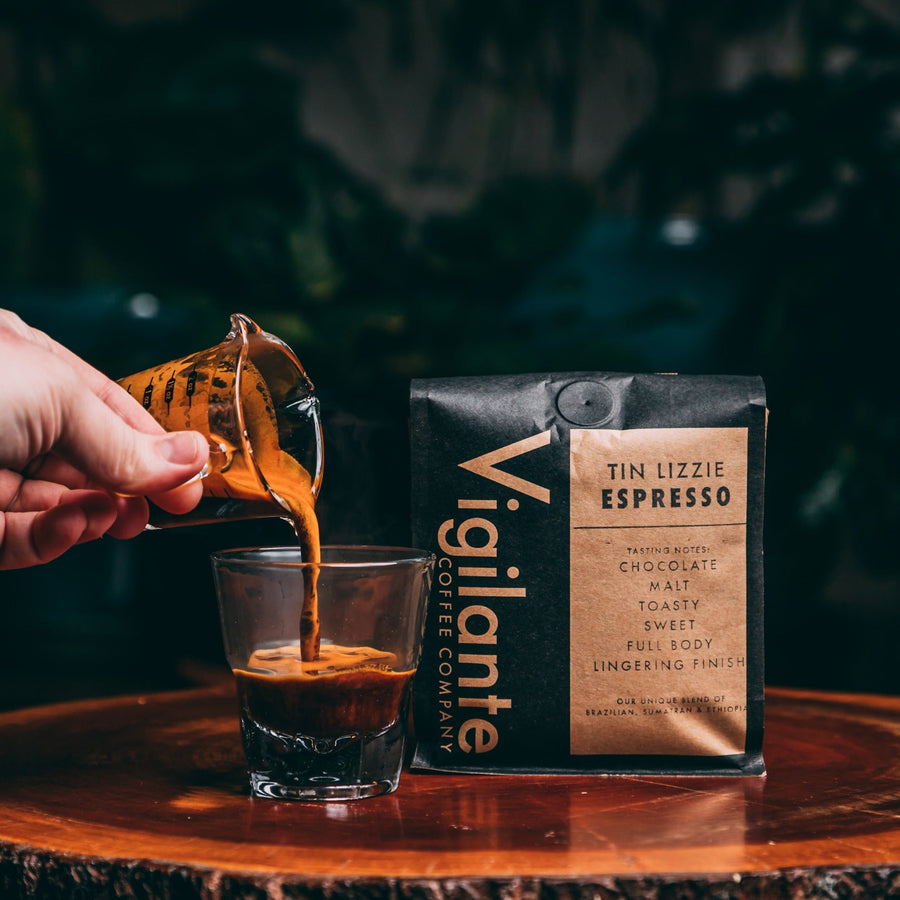How to Store SOE Single Origin Espresso for Optimal Freshness
How to Store SOE Single Origin Espresso for Optimal Freshness
Blog Article
Checking Out the Rich Flavors of Coffee Beans: a Deep Dive Into Espresso and Blended Coffee Beans
When you discover the abundant flavors of coffee beans, you discover a complicated globe where each variety brings its very own character to your cup. Comprehending the origins, processing techniques, and roasting techniques can transform your coffee experience. As you navigate through the art of coffee and the creative thinking behind mixed coffees, you'll begin to appreciate the nuances that make each sip special. What you'll find next could alter the way you appreciate your early morning brew.
The Beginnings of Coffee Beans: Exploring Terroir and Flavor Profiles
When you take a sip of coffee, you're not simply appreciating a drink; you're experiencing a rich tapestry of tastes shaped by the beans' beginnings. Each area produces one-of-a-kind taste profiles affected by elevation, climate, and dirt. For example, beans from Ethiopia frequently break with brilliant, fruity notes, while those from Colombia tend to supply a balanced, nutty sweet taste.
As you discover different beginnings, you'll see how terroir-- the ecological factors impacting a plant-- plays a crucial role - Single Origin Espresso. The exact same coffee selection can taste substantially different depending upon where it's expanded
When you think about these variables, you start to appreciate the complexity behind your mug. Each sip narrates of the land and the farmers that nurtured the beans. So, next time you indulge, think of the journey your coffee took prior to it reached your hands, and savor those complex tastes that reflect its origin.
Recognizing Coffee: The Art and Scientific Research Behind the Mixture
When you consider espresso, it's not practically the solid flavor; it's likewise regarding the methods that bring it to life. Understanding just how various prep work techniques influence preference can change your developing experience. Let's explore the ins and outs of espresso preparation and uncover the one-of-a-kind taste accounts that make each cup special.
Coffee Prep Work Strategies
Espresso preparation is both an art and a science, combining precise strategies with a deep understanding of coffee. To begin, you'll wish to select high-grade, fresh baked beans and grind them carefully for suitable extraction (Single Origin Espresso). The grind dimension is crucial; too coarse, and your coffee will certainly be weak, also fine, and it'll be bitter
Next, tamp the premises uniformly in the portafilter to guarantee consistent extraction. When you secure it right into the maker, go for a developing temperature between 190 ° F and 205 °
F.As you pull the shot, expect the best removal time-- around 25-30 secs. The result ought to be a rich, velvety espresso with a lovely layer of crema on top. With method, you'll master these methods.
Taste Profiles Described
The world of espresso provides an abundant tapestry of taste accounts that can boost your coffee experience. Light roasts typically display bright acidity and vibrant flavors, while dark roasts existing much deeper, bolder tones.
Understanding these accounts aids you pick the appropriate coffee for your taste. Explore different blends can reveal surprising combinations. A well-crafted mix could balance the brilliant notes of an Ethiopian bean with the rich, chocolatey undertones of a Brazilian bean. Embrace the journey of finding espresso's varied tastes, and you'll transform your coffee ritual right into an amazing adventure.
Handling Approaches: Exactly How They Influence Flavor and Aroma
While it could appear that the beginning of coffee beans is the most substantial consider identifying their taste and fragrance, the processing approaches utilized post-harvest play a just as essential function. You'll find that these methods can substantially alter the last preference account of your mug.
For instance, the washed procedure eliminates the fruit from the beans prior to fermentation, commonly resulting in a cleaner, brighter taste. The all-natural procedure leaves the fruit intact during drying out, resulting in a sweeter, fruitier profile.
Various other methods, like honey handling, strike an equilibrium, allowing some fruit mucilage to continue to be, offering an unique intricacy.
Each processing method connects with the beans' fundamental characteristics, improving or silencing particular tastes and aromas. When you drink that espresso or mixed coffee, remember that the journey from cherry to cup is affected not simply by beginning yet also by how those beans were refined.
Toasting Techniques: Unlocking the Full Possible of Coffee Beans
Roasting techniques are necessary for disclosing the complete potential of coffee beans, as they transform raw, environment-friendly beans right into the aromatic, delicious coffee you take pleasure in. The option of roasting technique-- light, tool, or dark-- significantly affects taste profiles. Light roasts protect the beans' natural acidity and fruity notes, while medium roasts equilibrium sweet taste and richness. Dark roasts, on the other hand, highlight vibrant, smoky tastes.
A slower roast at lower temperatures allows for SOE complex flavors to establish, while a quicker roast can intensify resentment. By understanding these techniques, you'll disclose a globe of flavor, elevating your coffee experience to brand-new heights.
The Magic of Blended Coffee: Developing Special Flavor Experiences
Developing an unique taste experience with mixed coffee can change your morning routine right into an exploration of preference. By integrating various beans from different areas, you can reveal a harmony of flavors that boost your mug to new elevations. Each mix offers a distinct account, stabilizing sweetness, level of acidity, and body to create something genuinely special.
When you select a mix, you're not simply choosing a coffee; you're picking a journey throughout varied landscapes and cultures. Trying out with different combinations permits you to discover your individual faves, whether you take pleasure in fruity notes or abundant, chocolatey undertones.

Sampling Notes: Identifying the Subtleties in Your Cup
As you drink your coffee, you might see a range of flavors dancing on your palate, each revealing the details of the beans. You might taste the intense acidity reminiscent of citrus or the deep, rich notes akin to dark chocolate. The sweet taste can stimulate honey or caramel, stabilizing the general profile wonderfully.
Focus on the body of the coffee-- does it feel ventilated and light, or is it full and velvety? The finish, too, offers clues; a lingering aftertaste might mean nuttiness or floral undertones.

Do not neglect to check out the special attributes of different origins, as each area passes on distinct tastes - Single Origin Espresso. Ethiopian coffees usually existing fruity notes, while Colombian beans might display a much more rounded sweet taste. By acknowledging these nuances, you'll strengthen your gratitude for each mug, elevating your coffee experience to brand-new elevations

Brewing Techniques: Taking Full Advantage Of Flavor Removal for Every Bean
When you check out the various developing approaches, you'll discover that each method can considerably influence the flavor account of your coffee. From French press to pour-over, each approach essences various compounds, enhancing or silencing specific notes. Making use of a French press permits oils to remain in the mixture, developing a richer taste, while pour-over emphasizes clearness and illumination.
Temperature and grind size likewise play important roles. A coarser grind functions best for cool brews, while a fine grind is suitable for coffee. Trying out water temperature-- between 195 ° F and 205 ° F-- can disclose concealed flavors, too.
Do not fail to remember about soaking time; a quick removal can lead to sour notes, while over-extraction may produce anger. By readjusting these variables, you can make best use of taste removal and absolutely raise your coffee experience. Take pleasure in the trip of uncovering what approach finest suits your taste!
Frequently Asked Inquiries
What Is the Suitable Water Temperature Level for Brewing Coffee?
The perfect water temperature for brewing coffee's between 195 ° F and 205 ° F. If you use water that's too hot, you'll over-extract tastes; too cool, and you won't draw out sufficient. Aim for that wonderful place for the very best brew!
How Does Grind Size Impact Coffee Flavor?
Grind dimension substantially affects coffee flavor. Finer grinds extract much more tastes and oils, resulting in a bolder taste, while coarser grinds yield a lighter flavor. Adjusting grind dimension aids you attain your desired coffee account.
Exist Health Perks Linked With Alcohol Consumption Coffee?

What Is the Difference Between Arabica and Robusta Beans?
Arabica beans are smoother and sweeter, typically featuring fruity flavors, while robusta beans are more powerful with a bitter preference and greater caffeine web content. You'll see these differences in aroma and developing experience.
Just How Can I Shop Coffee Beans for Freshness?
To keep coffee beans for quality, keep them in a closed container, far from heat, wetness, and light. You'll maintain their taste longer if you only grind what you need right before brewing.
Discovering the Abundant Tastes of Coffee Beans: a Deep Dive Into Espresso and Blended Coffee Beans.
When you check out the rich flavors of coffee beans, you discover a complex globe where each range brings its own personality to your cup.When you take a sip of coffee, you're not simply delighting in a beverage; you're experiencing an abundant tapestry of flavors shaped by the beans' origins.Roasting methods are essential for disclosing the complete possibility of coffee beans, as they transform raw, green beans right into the fragrant, tasty coffee you take pleasure in.As you drink your coffee, you might observe a range of flavors dancing on your taste, each disclosing the ins and outs of the beans.
Report this page